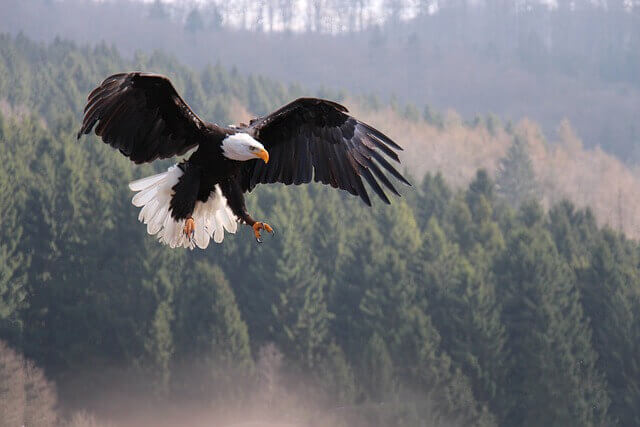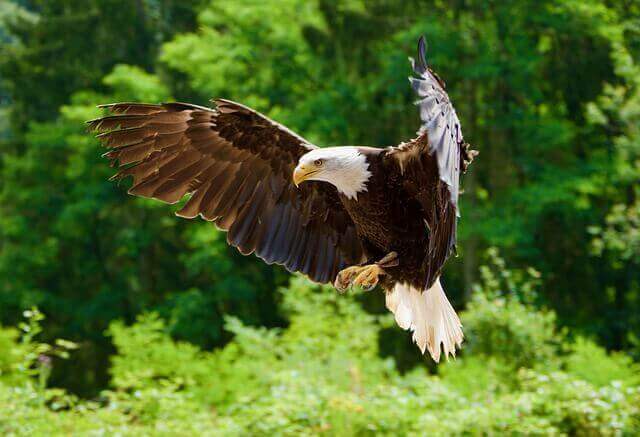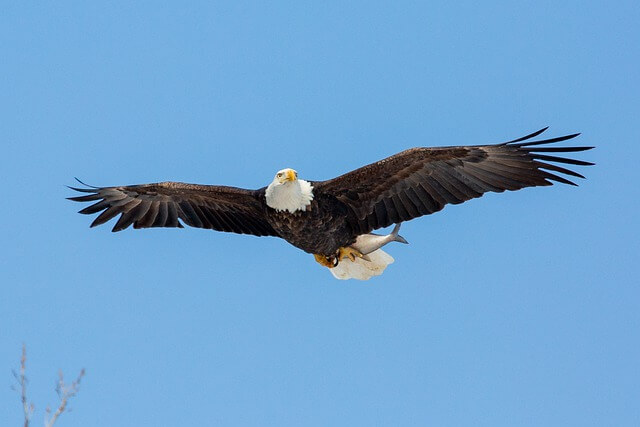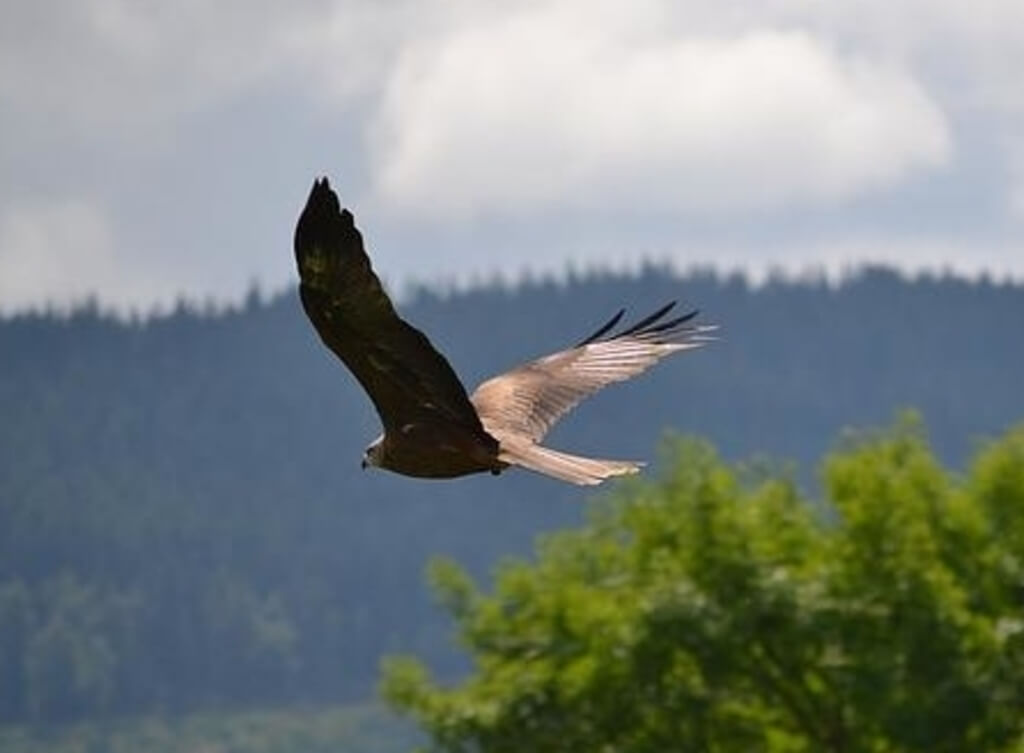Eagles are some of the most powerful and majestic birds in the world. They can fly incredibly fast, but how fast can eagles fly? In recent years, scientists have been able to measure the speed of eagles in flight using a new technology. In this post, we will explore just how fast these magnificent birds can travel and what this information can tell us about their physical abilities and behavior.
Table of Contents
- 1 How fast can eagles fly?
- 2 How long can an eagle fly without landing?
- 3 How fast can a golden eagle fly?
- 4 Do eagles fly at night?
- 5 How fast can a hawk fly?
- 6 How far can a bald eagle see?
- 7 How do eagles soar?
- 8 How far can an eagle fly in a day?
- 9 How fast can harpy eagles fly?
- 10 How fast can wedge tailed eagles fly?
- 11 How fast can martial eagles fly?
- 12 How do eagles fly so fast?
- 13 How fast can an eagle fly mph?
- 14 How fast can a bald eagle fly in mph?
- 15 Do eagles fly in formation?
- 16 How far can an eagle fly in an hour?
- 17 Are eagles faster than Falcons?
- 18 Can eagles fly in the rain?
- 19 What is the fastest eagle?
- 20 Can an eagle fly across the ocean?
- 21 Can an eagle fly higher than a plane?
- 22 Can an eagle fly higher than a hawk?
- 23 How do eagles fly in a storm?
- 24 Author
How fast can eagles fly?
Most eagles cruise at speeds around 30 miles per hour, but they can reach bursts of speed up to 100 mph when necessary. In level flight, eagles can cover distances of up to 100 miles a day on average, and 250 miles in a day during migration. When diving for prey, eagles can reach speeds of up to 200 mph in just a few seconds.
How long can an eagle fly without landing?
The average distance traveled without landing for an eagle is about 125 miles. This is equivalent to flying for 4-6 hours without stopping. Eagles have incredible energy, and have been known to fly even further than this, but it is not common for them to do so. When they do need to land, eagles typically find a spot near water in order to drink and hunt.
How fast can a golden eagle fly?
The average speed of a golden eagle is around 80 mph when flying horizontally. However, when they dive, they can reach speeds of up to 200 mph! They’re one of the fastest animals in the world. They use their speed to catch prey such as hares, rabbits, rodents and even other birds.
Do eagles fly at night?
The truth is, eagles can fly both during the day and at night, depending on their needs at the time. Eagles are diurnal animals, which means they prefer to hunt during the day, when there is more light available.
This is because they have a bad night vision and cannot hunt as effectively at night. Eagles are opportunistic predators, which means that they will hunt whenever they have the chance.
Eagles can see about three times better in daylight than in the dark. Additionally, hunting at night would put them at a disadvantage against their prey, who would also be active at night.
How fast can a hawk fly?
Hawks are the fastest bird in the sky, reaching speeds of up to 150 miles per hour when diving. They use their speed to hunt prey, which they typically catch by swooping down on them from high in the air. Hawks can also fly at speeds of around 30-40 miles per hour while cruising.
How far can a bald eagle see?
Bald eagles have exceptionally good eyesight, which allows them to spot prey from great distances. They can see fish swimming in the water up to a mile away, and they can spot a rabbit or squirrel from up to two miles away.
Their eyes are specially adapted to see in high-contrast environments, such as against snow-covered ground or bright blue sky. This helps them find their prey even when it is camouflaged.

How do eagles soar?
There are many theories as to how eagles soar so effortlessly through the sky. Some people believe that eagles use thermal air currents to their advantage, while others think that they have some sort of superpower that allows them to stay in the air for hours on end.
The truth is, eagles use a variety of techniques to fly, including soaring, thermals, and up-drafts. Soaring is probably the most common way that eagles fly. They use their large wingspan and powerful muscles to ride the wind currents and stay in the air for long periods of time.
Eagles also use thermals to their advantage. Thermals are columns of warm air that rise from the ground and help lift objects into the sky. By flying close to these thermals, eagles can stay in the air for extended periods of time.
How far can an eagle fly in a day?
Eagles can fly up to 250 miles in a day during migration, making them among some of the most capable long-distance fliers in the avian world. How do eagles soar so high and for such great distances?
Their large wingspans (up to eight feet) give them plenty of surface area to work with, and their relatively lightweight body mass also helps.
Eagles use a variety of techniques to help them stay in the air for extended periods of time, including riding thermals (warm updrafts) and grasp onto rising air currents.
How fast can harpy eagles fly?
The harpy eagle is the world’s largest and most powerful raptor, with a wingspan that can reach up to 7 feet. These birds are incredibly fast and can fly up to speeds of 50 mph.
They use their speed to hunt down prey, which can include monkeys, sloths, and even small deer. The harpy eagle is a formidable predator and is known to take down prey that is much larger than itself.
How fast can wedge tailed eagles fly?
Wedge-tailed eagles are the largest bird of prey in Australia, and can travel at a speed of 50 mph (80 kph). They use their powerful talons to snatch up prey, which can include rabbits, lizards, and even small animals. Wedge tailed eagles have been known to dive from high in the sky to catch their prey.
Wedge-tailed eagles are the largest bird of prey in Australia, and can travel at a speed of 50 mph (80 kph), making them one of the fastest birds in the world. They use their speed to hunt down prey, as well as to escape danger.
Eagles have been known to reach speeds of up to 100 mph (160 kph) when diving to catch prey. They use their powerful talons to snatch up prey, which can include rabbits, lizards, and even small animals.
How fast can martial eagles fly?
Martial eagles are some of the fastest animals on Earth, capable of reaching speeds of up to 143 mph (230 kph). This makes them incredibly efficient hunters, as they can catch prey that is much larger than themselves. Although martial eagles are not the only birds that can fly fast, they are certainly among the most impressive. This makes them one of the most sought-after birds for bird enthusiasts.
How do eagles fly so fast?
There are many factors that contribute to how eagles fly so fast. Their large wingspan and their aerodynamic shape help them cut through the air with ease.
Additionally, eagles have a sleek body that helps reduce drag on the wings. And finally, eagles use their powerful wings to create a lot of lift, which allows them to fly quickly and efficiently.

How fast can an eagle fly mph?
The average speed of an eagle in flight is around 32 mph (50 km/h), but they have been recorded flying as fast as 100 mph (160 km/h). Eagles have even been known to dive at speeds of up to 200 mph (321 km/h)!
They achieve these high speeds by folding their wings back and tucking them in close to their body. This creates a more streamlined shape that allows the eagle to cut through the air more easily.
How fast can a bald eagle fly in mph?
The bald eagle is the fastest bird in North America. They can fly up to speeds of up to 100 mph (160 km/h). Eagles use their speed to catch prey while flying, and to escape danger.
Eagles usually fly between 40 – 70 mph (64 – 113 km/h), but they can reach speeds of 100 mph (160 km/h) when they need to. They can also dive at high speeds to catch fish or other prey.
Do eagles fly in formation?
Some people believe that eagles fly in formation, but this is not usually the case. Eagles usually fly alone, although they may occasionally fly in pairs.
While it is possible for eagles to fly in formation, they are more likely to do so when hunting or migrating. When flying in formation, eagles use a variety of methods to communicate with one another, including vocalizations and body language.
How far can an eagle fly in an hour?
The average eagle can travel about 30-35 miles in an hour, but there are many factors that affect how far an eagle can fly, such as wind speed, altitude, weight, the bird’s age and health. Eagles use thermals to gain altitude and then glide across the landscape to their destination. They will also flap their wings to maintain altitude or to move forward.
Are eagles faster than Falcons?
According to the Guinness World Records, the golden eagle is clocked at speeds of up to 200 mph, while the peregrine falcon is known to reach up to speeds of 240 mph – making the peregrine falcon the fastest animal on Earth..
But does this mean that eagles are always faster than falcons? Not necessarily. There are a number of different factors that can affect how fast an animal can fly, including its size and weight.
And while eagles may be larger than falcons, this doesn’t always mean they will be able to fly faster. In fact, some research suggests that the peregrine falcon is actually the fastest bird in terms of pure speed, with the golden eagle coming in a close second.
Can eagles fly in the rain?
There is a lot of debate over whether eagles can fly in the rain. Some people believe that eagles are able to take flight in any condition, while others think that the precipitation would make flying too difficult.
The truth is, eagles can fly in the rain, but it depends on the circumstances. If there is a light rain falling, eagles will be able to fly just fine. However, if it is raining hard or there is thunder and lightning, they will likely stay grounded.
Eagles have large wingspans, so they need a lot of air to keep them flying. When it’s raining hard, there’s not enough air to support their weight, and they could easily get blown off course.

What is the fastest eagle?
The Golden Eagle is the fastest eagle in the world, with speeds of up to 200 mph (320kph). They are known for their incredibly fast dive speeds, which make them one of the most fearsome predators in the skies.
Golden Eagles can reach these speeds thanks to their large wingspan and aerodynamic body. They use their speed to capture prey such as rabbits, hares, and other small mammals.
Can an eagle fly across the ocean?
Eagles are excellent flyers and can fly long distances. They have been known to fly up to 250 miles in a single day. So, can an eagle fly across the ocean? Yes, eagles can fly across the ocean.
They are able to do this by flying high in the air and using the wind currents to help them along. Eagles have been known to fly from North America to Europe and back again.
They can also fly from South America to Africa and back again. It is important for eagles to be able to fly long distances because they need to find food and mate with other eagles. Eagles usually eat small animals like rodents, rabbits, and fish.
Can an eagle fly higher than a plane?
Eagles are some of the highest flying birds in the world. Depending on the species, eagles have been known to reach altitudes of up to 13,000 feet. This is possible because of their unique physiology. Eagles have specially adapted lungs that allow them to take in more oxygen than other birds.
This helps them when they are flying at high altitudes, where there is less oxygen available. Eagles also have very large wingspans, which gives them more lift and helps them stay in the air for longer periods of time.
Can an eagle fly higher than a hawk?
Eagles are typically larger birds and have more powerful wings, which give them the ability to soar to greater heights. Hawks, on the other hand, are more agile and have better vision, which allows them to hunt in tight spaces. In general, eagles can fly higher than hawks, but there are many exceptions to this rule.
How do eagles fly in a storm?
Eagles are among the strongest bird species in the world. They can fly in high winds and storms because they use a technique called thermals.
These are the rising pockets of warm air that rise from the ground. Eagles use these thermals to stay in the air and avoid being blown away by the wind. They also use them to travel long distances without having to flap their wings very much.
Related Post:


